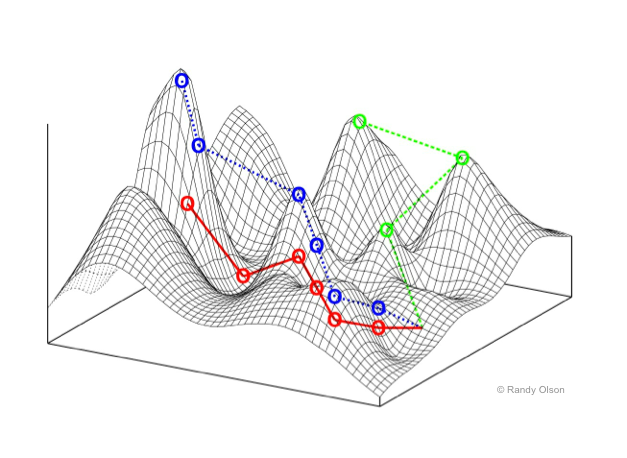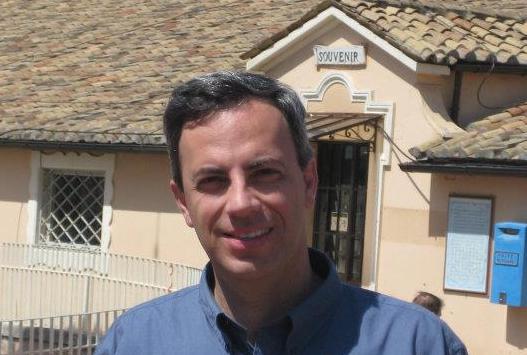
By Randy Olson – Own work, CC BY-SA 3.0, File
Steven Johnson uses the concept of the “adjacent possible” in his book “Where Good Ideas Come From: The Natural History of Innovation” to describe how new insights can be generated in previously unexplored areas.
Stuart Kauffman in 2002 introduced the “adjacent possible” theory that proposes that biological systems are able to morph into more complex systems by making incremental, relatively less energy consuming changes in their make up.
Steven Johnson uses Kauffmann’s logic in Where Good Ideas Come From, and applies the same logic to innovation. All future innovations, Johnson posited, require the possibilities that are available in the present—or the adjacent.
One relatively recent example of innovation through the Adjacent Possible is the creation of YouTube. Johnson explains that if Youtube founders had tried to create the same platform 10 years earlier, it would have failed because the early Web wasn’t able to support it.
Johnson looks at historical patterns from science and biological evolution to show how innovative ideas evolve and, eventually, rise.
Evolution and innovation usually happen in the realm of the adjacent possible
According to Kuffmann, four billion years ago, when life began, carbon atoms did not spontaneously arrange themselves into complex life forms like sunflowers or squirrels., but they had to first form simpler structures like molecules, polymers, proteins, and so on. But after each new step, new possibilities presented themselves for new combinations, expanding the realm of what was possible, until finally a carbon atom could reside in a sunflower.
Similarly, Amazon could not have been created in the 1950s. First, someone had to invent computers, then the Internet, and so on.
Both evolution and innovation tend to happen within the bounds of the adjacent possible, that is the realm of possibilities available at any given moment.
Great leaps beyond the adjacent possible are rare and doomed to be short-term failures. The environment is simply not ready for them yet.
For example, the nineteen-century British scientist Charles Babbage designed two classes of engine, Difference Engines, and Analytical Engines.
Difference engines are so called because of the mathematical principle on which they are based, namely, the method of finite differences. They only use arithmetical addition and remove the need for multiplication and division which are more difficult to implement mechanically. Difference engines are strictly calculators. They crunch numbers the only way they know how – by repeated addition according to the method of finite differences.
The Analytical Engines, on the other hand, are much more than a calculator but are a general-purpose computation machine. The Analytical Engine had many essential features found in the modern digital computer. It was programmable using punched cards.
Babbage in his life time wasn’t able to build either the difference engines or the analytical engines. But difference engines were built soon after his death, because they were in the bounds of the adjacent possible. On the other hand, the analytical engine was outside the bounds of the adjacent possible, being, at least on paper, the first programmable computer. But in Babbage’s days and for a long time after his death, there were no available parts to use to build such engine, nor available sufficient knowledge.
An interesting fact that has been observed is the predominance of multiples in innovation. A multiple occurs when several people independently make the same discovery almost simultaneously: this fact confirms that the adjacent possible is constrained by the available parts and knowledge.
For example, sunspots were discovered simultaneously by four scientists living in four different countries in 1611.


Trackbacks/Pingbacks